Abstract
Slope of terrain is an important orienting gradient affecting the goal-directed locomotion of animals. Its significance was assessed in experiment 1 by training rats to find in darkness a feeder on the top of a low cone (80-cm base, 0- to 4-cm high). A computerized infrared tracking system monitoring the rat's position in darkness showed that the path length on the cone surface was inversely proportional to cone height. A device allowing continuous generation of slope-guided locomotion was used in experiment 2. This device consists of a 1-m arena, the floor of which can be supported at a point corresponding to the position of one of three equidistant feeders located 17 cm from its center. The arena is inclined by the locomotion of the rat to a plane passing through the elevated (2- or 4-cm) feeder, the rat's center of gravity, and a point at the edge of the arena resting on the floor. The multitude of such planes generated by the rat's locomotion forms the surface of a virtual cone, the top of which is formed by the feeder. Additional path (difference between distance traveled and shortest distance of the animal from the goal at the onset of inclination) is inversely related to the incline of the arena and is a sensitive measure of performance in this type of vestibular navigation.
Full text
PDF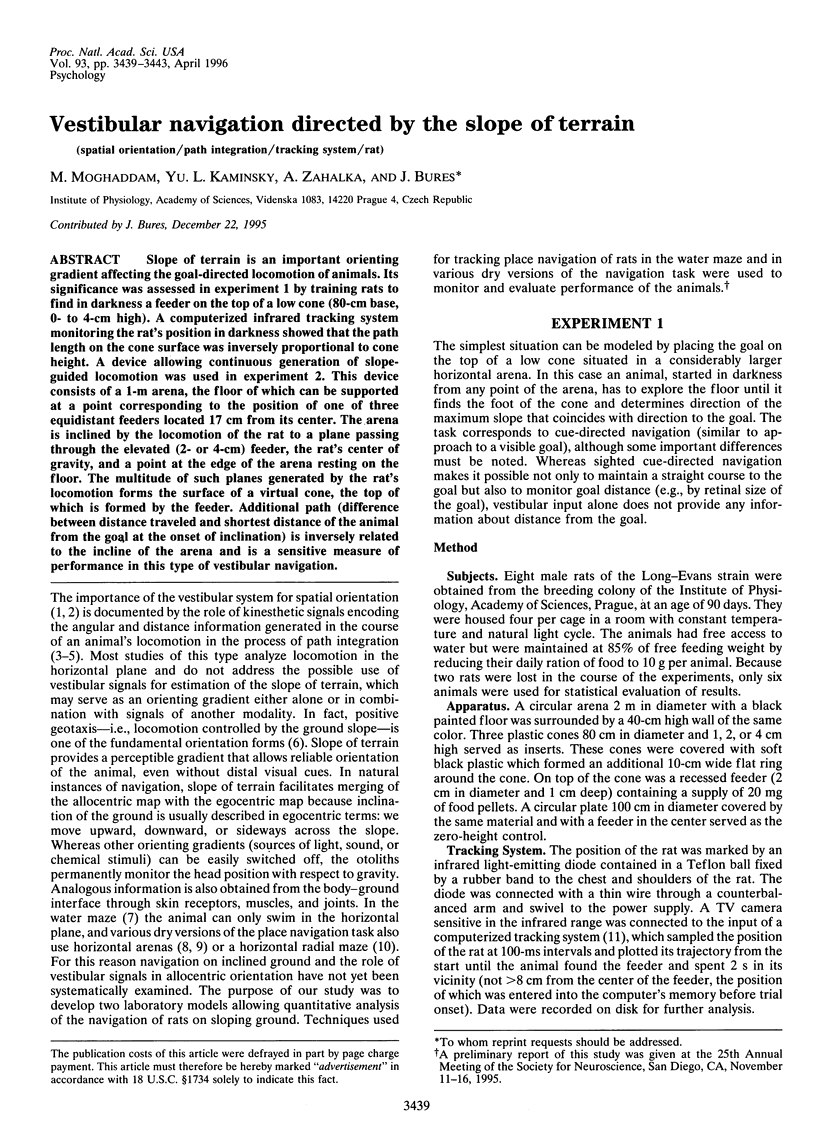
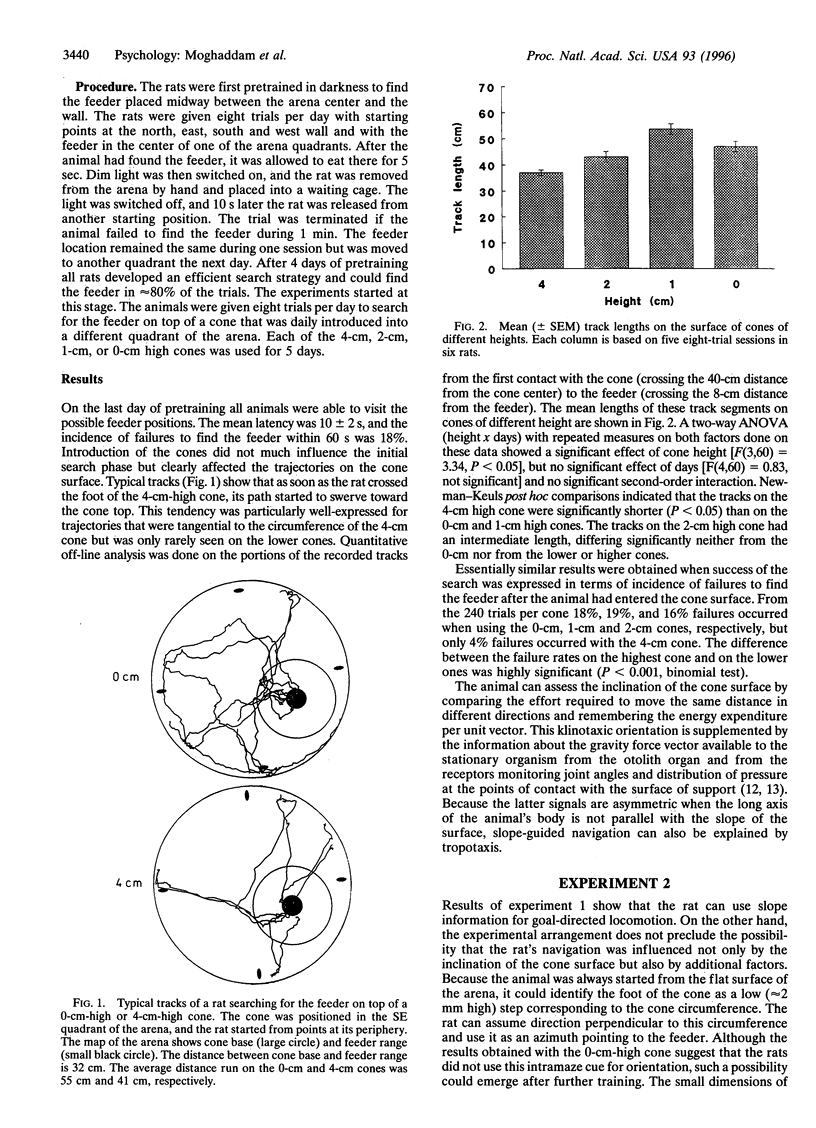
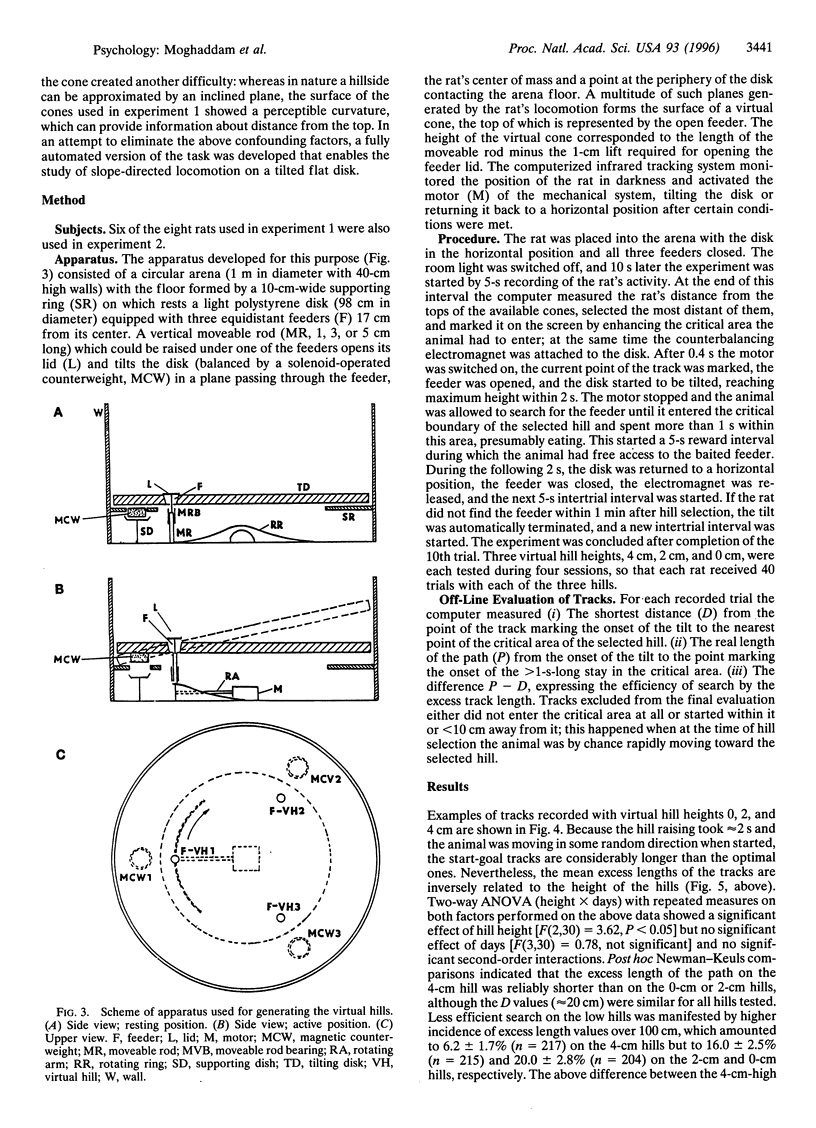
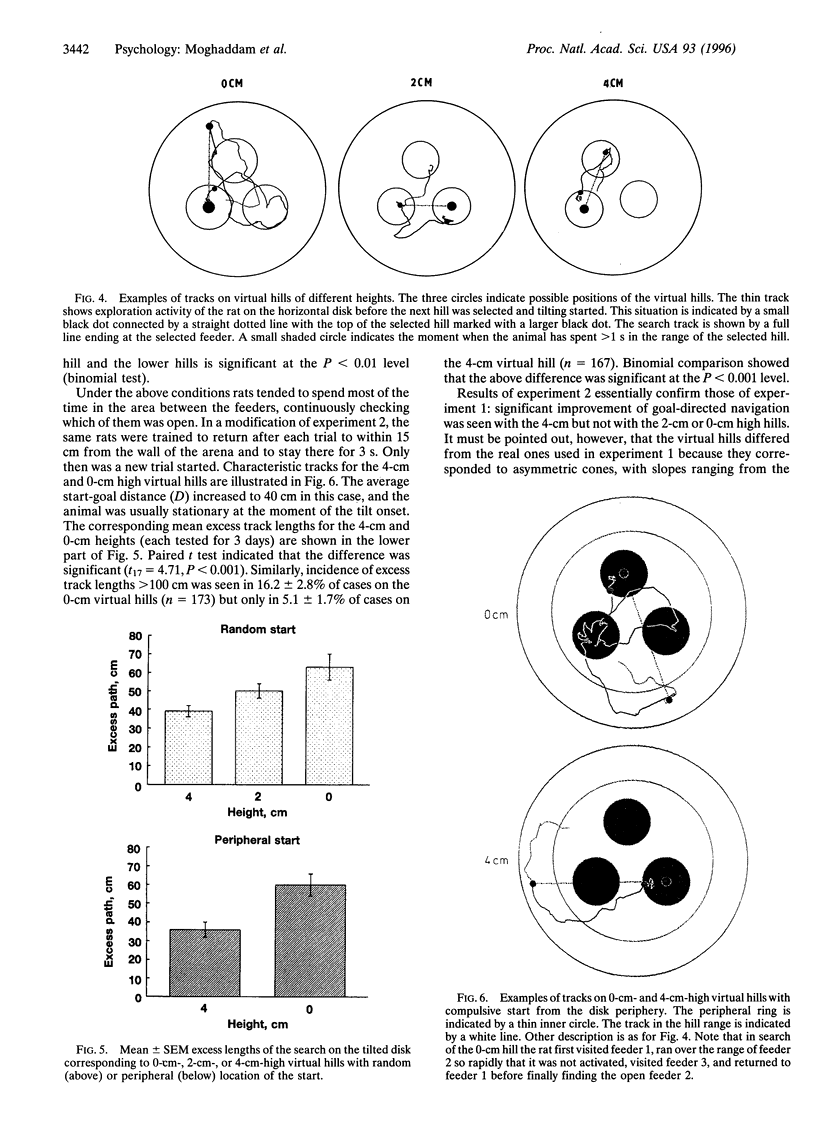
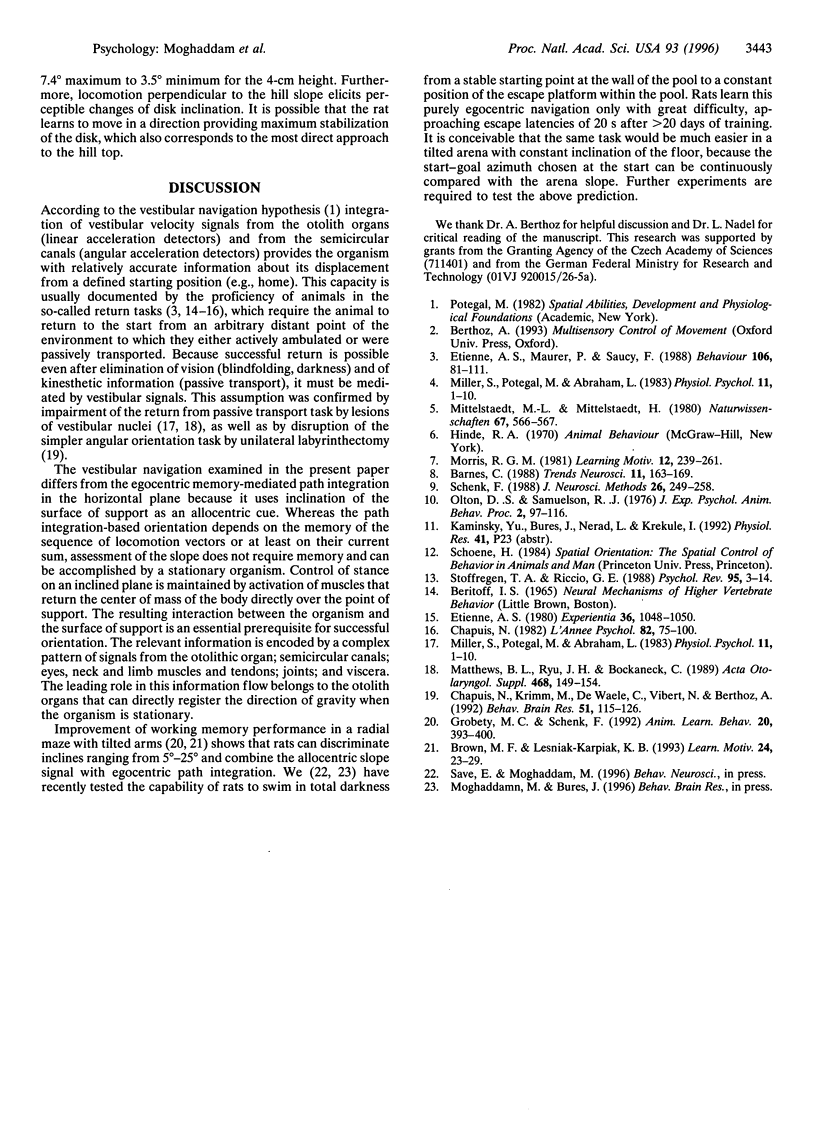
Selected References
These references are in PubMed. This may not be the complete list of references from this article.
- Barnes C. A. Spatial learning and memory processes: the search for their neurobiological mechanisms in the rat. Trends Neurosci. 1988 Apr;11(4):163–169. doi: 10.1016/0166-2236(88)90143-9. [DOI] [PubMed] [Google Scholar]
- Chapuis N., Krimm M., de Waele C., Vibert N., Berthoz A. Effect of post-training unilateral labyrinthectomy in a spatial orientation task by guinea pigs. Behav Brain Res. 1992 Nov 15;51(2):115–126. doi: 10.1016/s0166-4328(05)80205-0. [DOI] [PubMed] [Google Scholar]
- Etienne A. S. The orientation of the golden hamster to its nest-site after the elimination of various sensory cues. Experientia. 1980 Sep 15;36(9):1048–1050. doi: 10.1007/BF01965961. [DOI] [PubMed] [Google Scholar]
- Matthews B. L., Ryu J. H., Bockaneck C. Vestibular contribution to spatial orientation. Evidence of vestibular navigation in an animal model. Acta Otolaryngol Suppl. 1989;468:149–154. [PubMed] [Google Scholar]
- Schenk F. A homing procedure for studying spatial memory in immature and adult rodents. J Neurosci Methods. 1989 Jan;26(3):249–258. doi: 10.1016/0165-0270(89)90123-4. [DOI] [PubMed] [Google Scholar]
- Stoffregen T. A., Riccio G. E. An ecological theory of orientation and the vestibular system. Psychol Rev. 1988 Jan;95(1):3–14. doi: 10.1037/0033-295x.95.1.3. [DOI] [PubMed] [Google Scholar]


